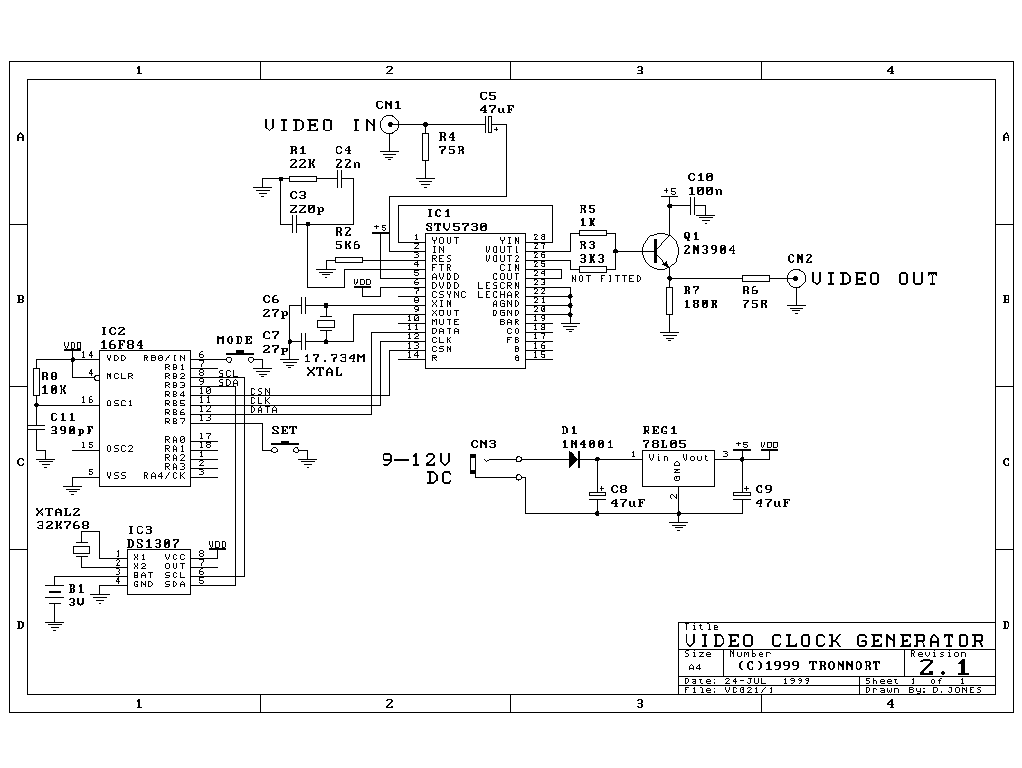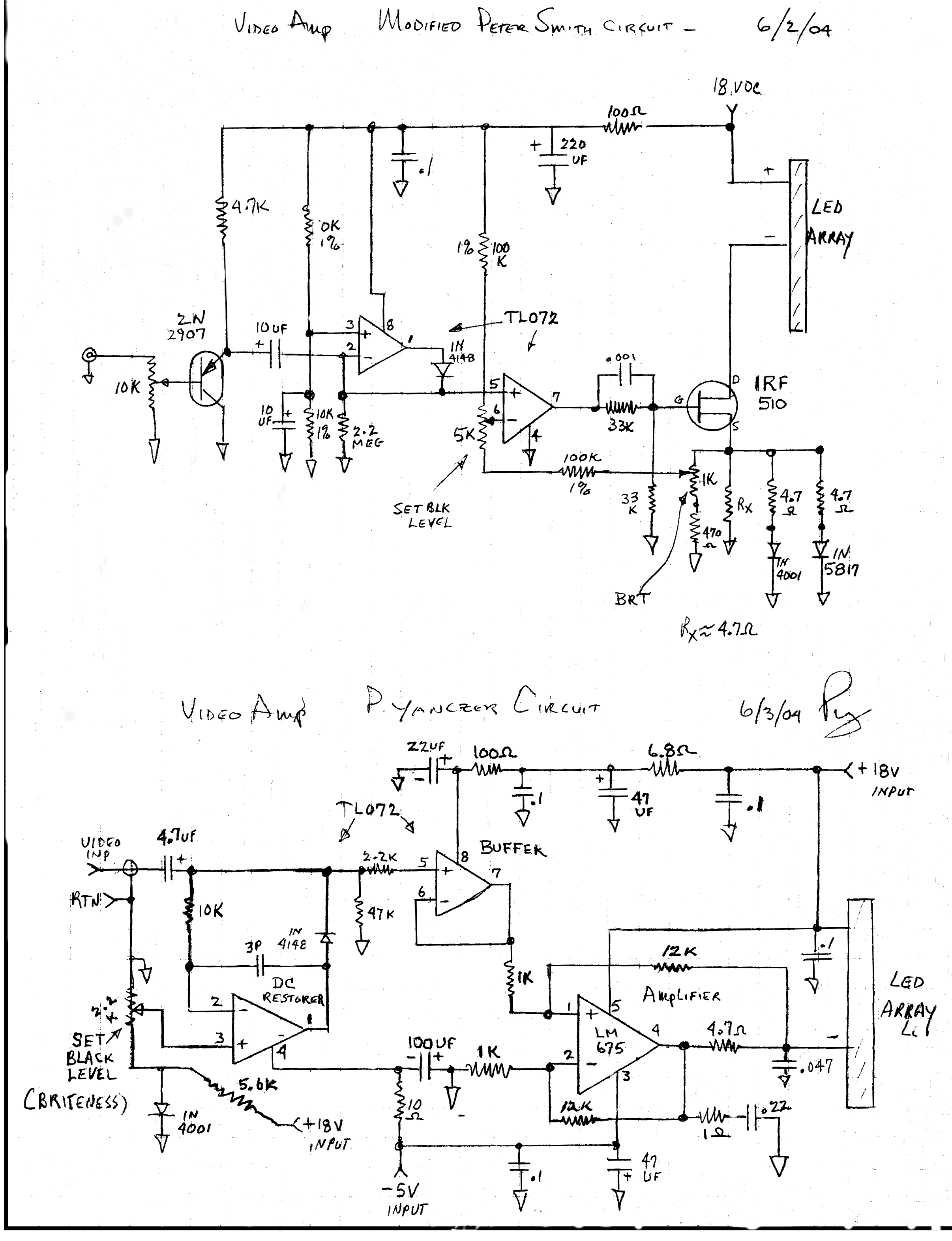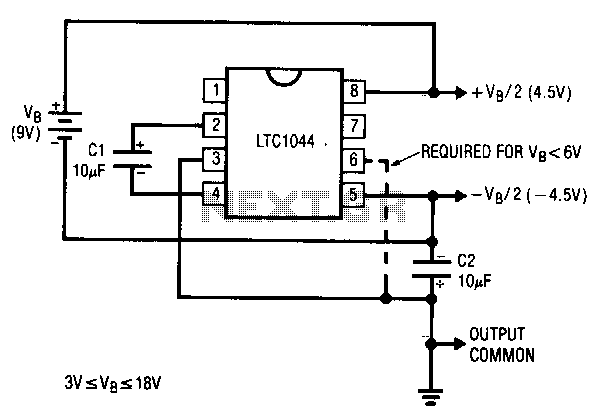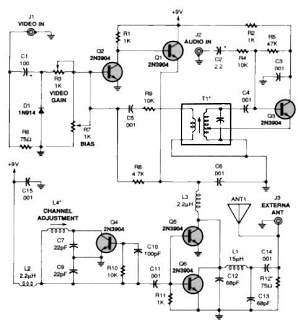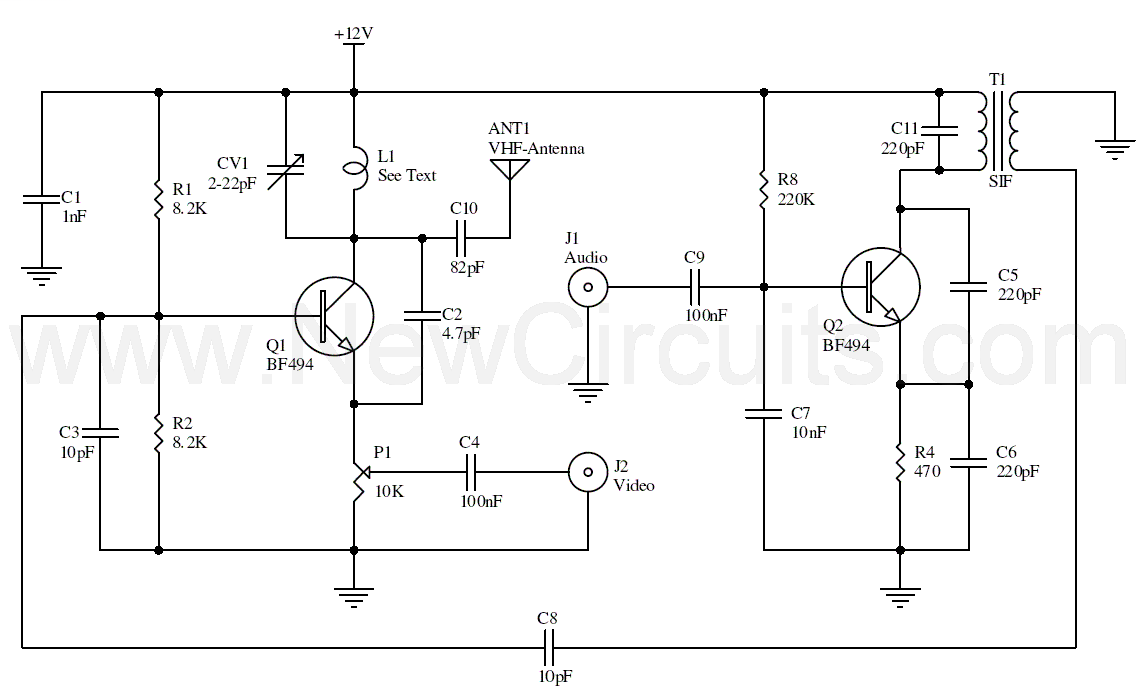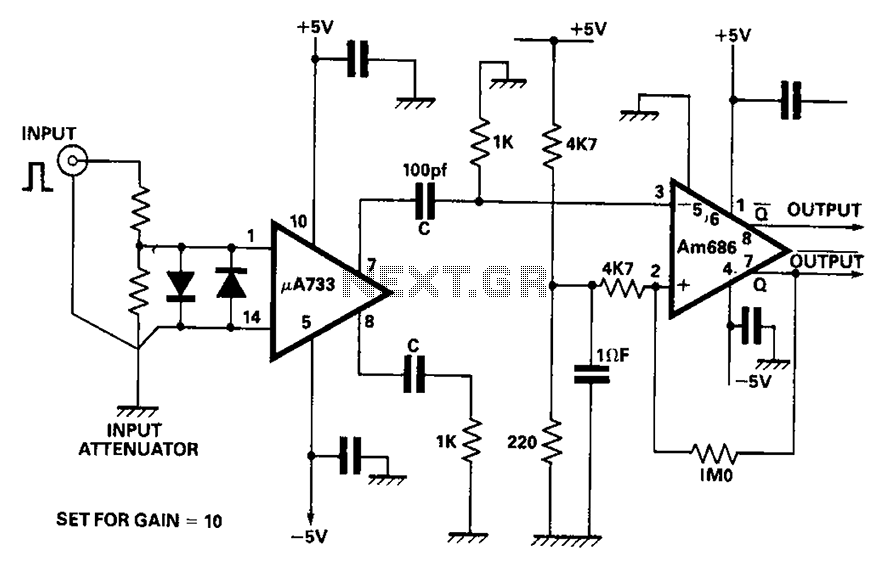
1 to 5 Video splitter
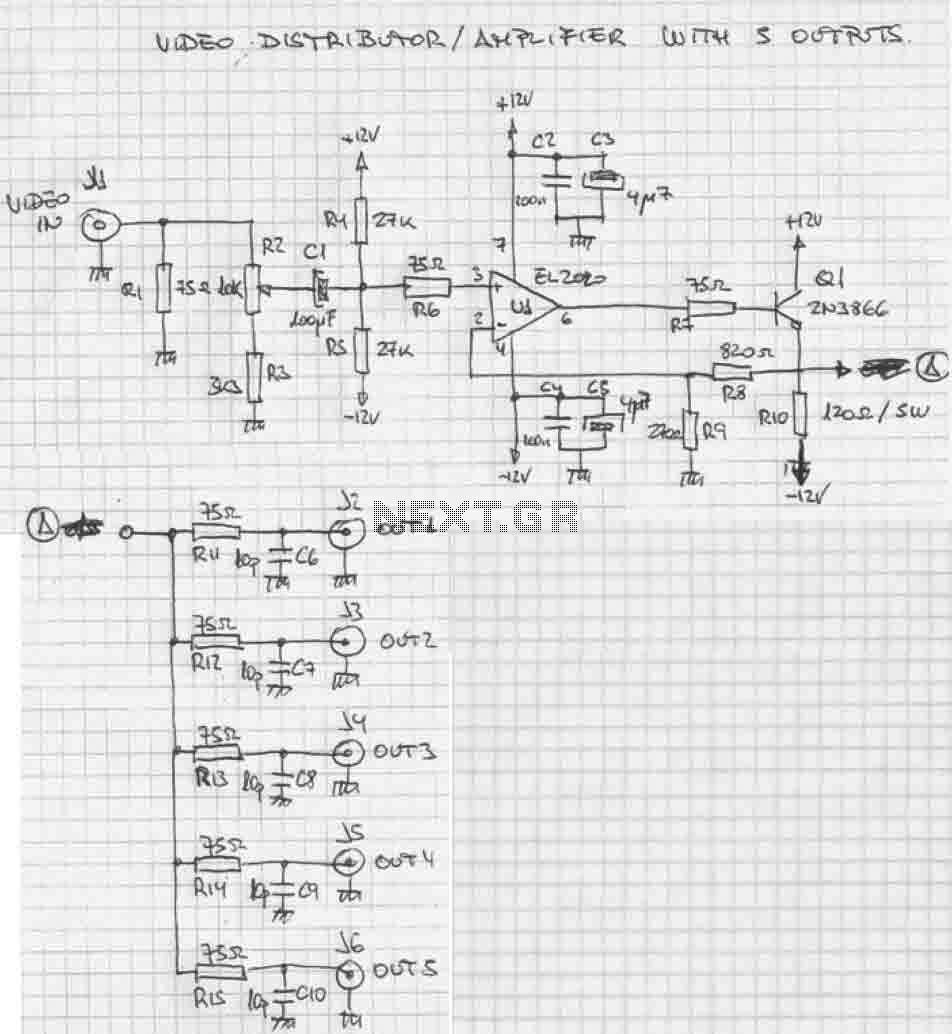
The circuit is based on the type EL2020 (or similar) operational amplifier which is marked by large bandwidth. The LL2020 amplifies the video signal applied to the input stage, with a gain adjustment range of ±6 dB. Output transistor Q1, a 2N3866, applies the video signal to the five outputs designed to drive loads with 75-Ω impedance. Video fans and professionals in the field will find in this small signal distributor-amplifier an excellent ally when it’s necessary to distribute a single video signal across several equipment. The circuit shown here should have a lot of applications. Basically, the distribution amplifier takes the composite video signal from a video player (VCR) or a video generator (analog output) and buffers it in such a way that it can be simultaneously applied to up to five different video equipment inputs, like monitors, TV sets, other VCRs, and so on. For example, in a hall, the image produced by a central DVD player can be shown on five different TV screens with the sound reproduced through a separate amplifier. The circuit requires a ±12 V symmetrical supply voltage, which can be obtained from a conventional power supply as shown by the schematic.
The described circuit utilizes the EL2020 operational amplifier, known for its high bandwidth and low distortion, making it suitable for video applications. The operational amplifier is configured to amplify the composite video signal, ensuring that the signal integrity is maintained while adjusting the gain within a range of ±6 dB. This gain adjustment is crucial for matching the output levels to the requirements of various video equipment.
The output stage employs a 2N3866 transistor, which is responsible for driving the five output channels. Each output is designed to interface with video equipment that presents a 75-ohm load, which is standard for video signals to minimize reflections and ensure signal fidelity. The design of the circuit allows for simultaneous distribution of the video signal to multiple devices, which is particularly useful in scenarios where a single source needs to be displayed on multiple screens.
The circuit's operation is powered by a ±12 V symmetrical power supply, which can be easily sourced from standard power supply units. This voltage level is suitable for the operational amplifier and ensures that the circuit can handle the required signal levels without distortion.
In practical applications, this circuit can be employed in various settings, such as educational institutions, conference rooms, and entertainment venues, where multiple displays are needed to show the same content. The compact nature of the circuit makes it an efficient solution for video distribution, allowing for neat installation and reduced wiring complexity. Overall, this small signal distributor-amplifier is a valuable tool for any video professional looking to enhance their setup.The circuit is based on the type EL2020 (or similar) operational amplifier which is marled by large bandwidth. The LL2020 amplifies the video signal applied to the input stage, with a gain adjustment range of ±6 dB.
Output transistor Q1, a 2N3866, applies the video signal to the five outputs designed to drive loads with 75-? impedance. Video fans and professionals in the field will find in this small signal distributor-amplifier an excellent ally when it’s necessary to distribute a single video signal across several equipments. The circuit shown here should have a lot of applications. Basically, the distribution amplifier takes the composite video signal from a video player (VCR) or a video generator (analogue output) and buffers it in such a way that it can be simultaneously applied to up to five different video equipment inputs, like monitors, TV sets, other VCRs and so on.
For example, in a hall, the image produced by a central DVD player can be shown on five different TV screens with the sound reproduced through a separate amplifier. The circuit requires a ±12 V symmetrical supply voltage, which can be obtained from a conventional power supply as shown by the schematic.
🔗 External reference
The described circuit utilizes the EL2020 operational amplifier, known for its high bandwidth and low distortion, making it suitable for video applications. The operational amplifier is configured to amplify the composite video signal, ensuring that the signal integrity is maintained while adjusting the gain within a range of ±6 dB. This gain adjustment is crucial for matching the output levels to the requirements of various video equipment.
The output stage employs a 2N3866 transistor, which is responsible for driving the five output channels. Each output is designed to interface with video equipment that presents a 75-ohm load, which is standard for video signals to minimize reflections and ensure signal fidelity. The design of the circuit allows for simultaneous distribution of the video signal to multiple devices, which is particularly useful in scenarios where a single source needs to be displayed on multiple screens.
The circuit's operation is powered by a ±12 V symmetrical power supply, which can be easily sourced from standard power supply units. This voltage level is suitable for the operational amplifier and ensures that the circuit can handle the required signal levels without distortion.
In practical applications, this circuit can be employed in various settings, such as educational institutions, conference rooms, and entertainment venues, where multiple displays are needed to show the same content. The compact nature of the circuit makes it an efficient solution for video distribution, allowing for neat installation and reduced wiring complexity. Overall, this small signal distributor-amplifier is a valuable tool for any video professional looking to enhance their setup.The circuit is based on the type EL2020 (or similar) operational amplifier which is marled by large bandwidth. The LL2020 amplifies the video signal applied to the input stage, with a gain adjustment range of ±6 dB.
Output transistor Q1, a 2N3866, applies the video signal to the five outputs designed to drive loads with 75-? impedance. Video fans and professionals in the field will find in this small signal distributor-amplifier an excellent ally when it’s necessary to distribute a single video signal across several equipments. The circuit shown here should have a lot of applications. Basically, the distribution amplifier takes the composite video signal from a video player (VCR) or a video generator (analogue output) and buffers it in such a way that it can be simultaneously applied to up to five different video equipment inputs, like monitors, TV sets, other VCRs and so on.
For example, in a hall, the image produced by a central DVD player can be shown on five different TV screens with the sound reproduced through a separate amplifier. The circuit requires a ±12 V symmetrical supply voltage, which can be obtained from a conventional power supply as shown by the schematic.
🔗 External reference
